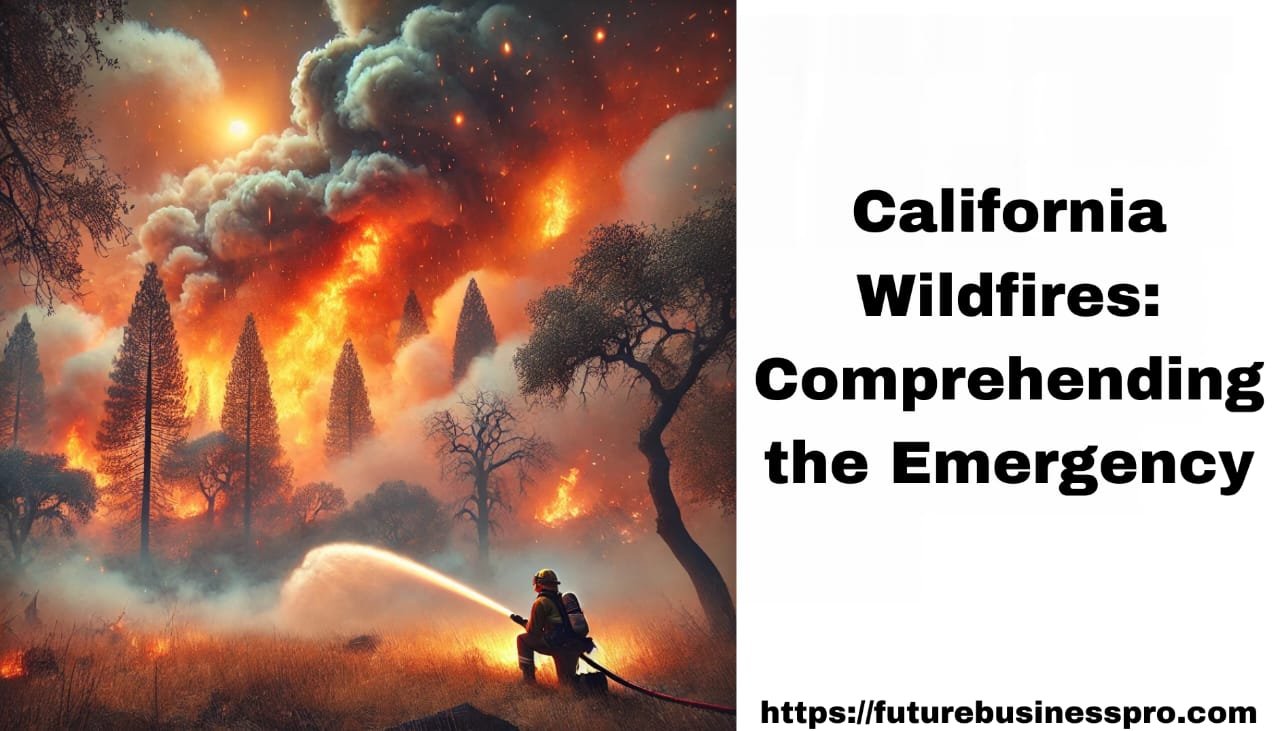California Wildfires: Comprehending the Emergency
introduction
The Growing Number of Wildfires in California
California Wildfires are now an annual occurrence devastating the states ecosystems people and landscapes. scientists decisionmakers and locals are all dealing with the destructive effects of these wildfires which have become much more frequent and intense over the last two decades.
How climate change affects wildfires
Californias wildfires are significantly fueled by climate change. The ideal environment for fires to start and spread is created by rising temperatures protracted droughts and decreased snowpack. As a result of the drying out of vegetation brought on by warmer temperatures woods become tinderboxes that might catch fire at any time.
Ignitions of Wildfires and Human Activities
wildfires may be started by natural causes such as lightning strikes but human activity is the main contributor. Ignition sites often include abandoned campfires dropped cigarettes and malfunctioning electrical equipment. The danger further increased when cities expand into regions that prone to fire.
The Tragic Effect on Societies
Homes businesses and vital infrastructure destroyed and thousands of individuals forced to relocate as a result of wildfires. Families may have to start again as whole communities turned to ash in a matter of hours.
Public Health and Wildfires
There serious health dangers associated with wildfire smoke and ash. PM2.5 or fine particulate matter may enter the lungs deeply and cause respiratory difficulties cardiac problems and long term health concerns for those who are susceptible.
The Impact of Wildfires on the Economy
The financial cost of wildfires in California is enormous. Firefighting operations infrastructure reconstruction insurance claims and lost production are among the expenses. Tourism agriculture and other important sectors also affected.
The Impact of Wildfires on Ecosystems
Ecosystems substantially changed by wildfires which often cause long term harm. Intense and frequent fires may damage biodiversity disturb animal habitats and cause soil erosion even though certain plant species depend on fire for reproduction.
How Drought Contributes to Wildfire Intensification
The ongoing drought in California makes the wildfire problem worse. When there is minimal rainfall,l the vegetation dries up producing a lot of dry fuel. Firefighting operations made more difficult by the demand on water sources and reservoirs.
Fire Management and Prevention Techniques
California uses a variety of management and preventative techniques to fight wildfires. The goal of vegetation management controlled burns and public education initiatives is to lower the likelihood of major fires.
Technological Developments in Firefighting
Firefighting operations have transformed by modern technologies. Authorities are better able to monitor and control wildfires thanks to satellite images drones and predictive modeling. Better resource allocation and speedier replies made possible by these techniques.
Evacuation Plans and Community Preparedness about California Wildfires
It advised that communities in high risk locations have emergency supplies on hand and create evacuation plans. Campaigns to raise public awareness emphasize how crucial it is to prepared in order to reduce fatalities during wildfire incidents.
Why Reforestation is important about California Wildfires
In order to restore regions destroyed by wildfires reforestation activities are essential. By storing carbon planting native plants aids in soil stabilization habitat restoration and climate change mitigation.
Changes to Law and Policy about California Wildfires
Stricter construction requirements land-use restrictions and financing for initiatives aimed at preventing wildfires all being implemented by policymakers. State and federal agencies are working together to address the underlying causes of wildfires.
How Individuals Can Help Lower the Risk of Wildfires about California Wildfires
Every person can help lower the danger of wildfires. Simple steps like removing vegetation from near houses adhering to fire safety regulations and reporting suspicious behavior may have a big impact.
Looking Ahead: Wildfire Managements Future
A mix of cutting edge technology strong regulations and community engagement will be crucial as wildfires increase in frequency and intensity. Reducing the long term risk of wildfires still requires addressing climate change.
Frequently Asked Questions about California Wildfires
what are the main causes of wildfires in california?
The majority of wildfires in california are the result of a mix of human activity such as abandoned cigarettes unsupervised campfires and electrical failures and natural causes such as lightning.
What impact do wildfires have on the quality of the air?
Large volumes of smoke and fine particulate matter (PM2.5) released during wildfires and these pollutants may cause major health issues and poor air quality particularly for those with respiratory disorders.
Is it possible to completely avoid wildfires?
Although no wildfire can completely avoided proactive steps like vegetation management controlled burns and public education may greatly lessen the frequency and severity of wildfires.
Why are wildfires in California becoming more severe?
Increased human activity in fire prone regions extended droughts and climate change have all contributed to Californias escalating wildfire catastrophe.
What should i do if my location is under danger from a wildfire?
Keep an emergency kit on hand heed evacuation orders and keep up with local news and emergency services if a wildfire threatens your region.



